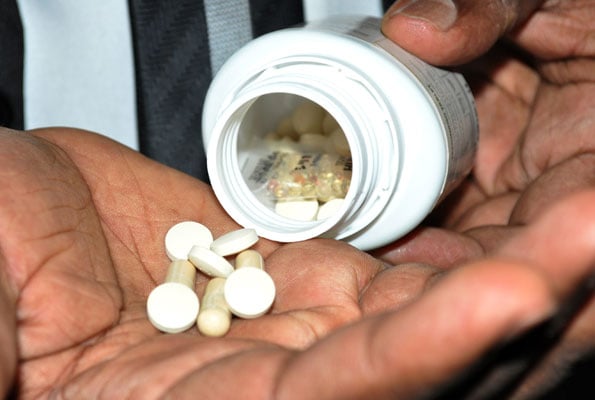As Uganda still fights to end early child marriages and teenage pregnancies, girls in Kalangala District, in the central region have resorted to a local remedy, mixing Paracetamol tablets, commonly known as Panadol, with milk to avoid conceiving.
A report, first published by Monitor, a local publication shows that many of the girls in their teens have taken hold of this ineffective and dangerous method due to limited access to reliable contraceptives.
For example, the local daily quoted one Namuli (not her real name), a 19-year-old student, who says she first learnt about the method while working at Misonzi Landing Site in Bufumira Sub-county a year ago.
“When I dropped out of school last year, I began engaging in commercial sexual activities to survive. The women I worked with taught me to use two Panadol tablets with a cup of milk as a way to avoid pregnancy,” says Namuli, adding; “They said it was the best option if I couldn’t access a health facility.”
In narration of how the method works, Namuli explained that they boil a cup of milk, let it cool to a warm temperature, and then take two Panadol tablets with it.
A survey conducted by Power to Youth, a consortium of three non-government organisations; Reproductive Health Uganda, Uganda Youth and Adolescents Health Forum, and the East African Sub-Region Support Initiative for Advancement of Women discovered that the method is common among different age groups in the remote landing sites in Kalangala islands.
The survey [conducted between August and September], according to the focal person for Power to You[th] in Kalangala District, Mr Jonathan Kiboneka, covered a representative sample of 30 respondents [young girls aged between 15 and 25] in Kalangala Town Council and the two sub-counties of Bufumira and Mazinga.
“During our survey, we discovered that young girls under 19 years of age typically take two tablets [of Panadol] with milk; those between 20 and 25 years, reportedly take four tablets, and women above 25 swallow six tablets with a cup of warm milk,” said Mr Kiboneka.
Ms Dorothy Ziribagwa, a youth advocate under the same programme from Mazinga Sub-county, said this ineffective practice among girls highlights a severe gap in reproductive health education and access to reliable contraceptive options in Kalangala, which comprises 64 habitable islands.
“The youth-friendly centres at a few health facilities aren’t effectively serving young people because some are inactive while others have health workers who stigmatise the youth,” she said. “This situation limits access to crucial services like contraceptives, which has significantly impacted youth health and their wellbeing.”
Dr Michael Suuna, a senior medical officer at Kalangala Health Centre IV, said using Panadol and milk as a contraception is among the many myths in the area regarding the prevention of unwanted pregnancies.
“It’s not true that Panadol and milk can be used as a family planning method. It’s a misconception we must fight and I advise all women and men who need family planning to visit accredited medical facilities that offer effective contraceptive methods that work and can prevent unplanned pregnancies,” he said.
Asked if Panadol pauses dangers is used without the prescription of a medical personnel, Dr Suuna said: “What many people don’t know is that Paracetamol doesn’t treat any illness but just eases the feeling of pain. And it is dangerous to swallow more tablets than the recommended dose. This can damage the liver, which can lead to death.”
He, however, revealed that Paracetamol is used during pregnancy but in moderate doses. “If the mother takes Paracetamol when pregnant, she must make sure that it is at the lowest effective dose and this has to be done for a short period.”
Ms Jane Namukasa, the Kalangala District assistant health officer-in-charge of Maternal and Child Health Services, acknowledged the challenges.
“Many young people feel discouraged from seeking effective contraceptives at our health facilities. So, we’ve chosen to bring youth advocates to our health centres, but our biggest challenge is finding ways of keeping them motivated and engaged in their work with us,” she said.
“Our midwives play a critical role in reproductive health education, but they are very few at many health centres, which affects the quality of services we offer,” she added.
According to government policy, a health centre II is supposed to have at least one enrolled midwife; a health centre III (two midwives) and a health centre IV should have at least three midwives.
About Kalangala
Kalangala District, with a population of 70,589 people, has seven health centre IIs, seven health centre IIIs and two health centre IVs spread over nine out of 64 habitable islands. The district is among those with the highest HIV/Aids prevalence in the country.
However, the HIV/Aids prevalence rate dropped from 16 per cent in the past years to 12.8 per cent, a success attributed to the availability of drugs and continuous sensitisation.
Available statistics indicate that 66 per cent of women and girls in Kalangala District need contraceptives, but 31 per cent aren’t using any method. Kalangala’s contraceptive use rate currently stands at 23 per cent.
Send us your story or opinion on: dailyexpressug@gmail.com. You can also follow Daily Express on WhatsApp for all the latest news and updates.


